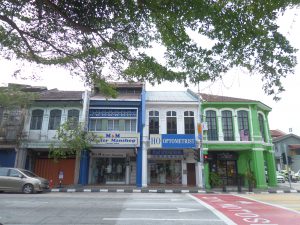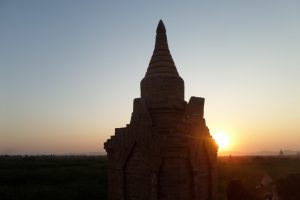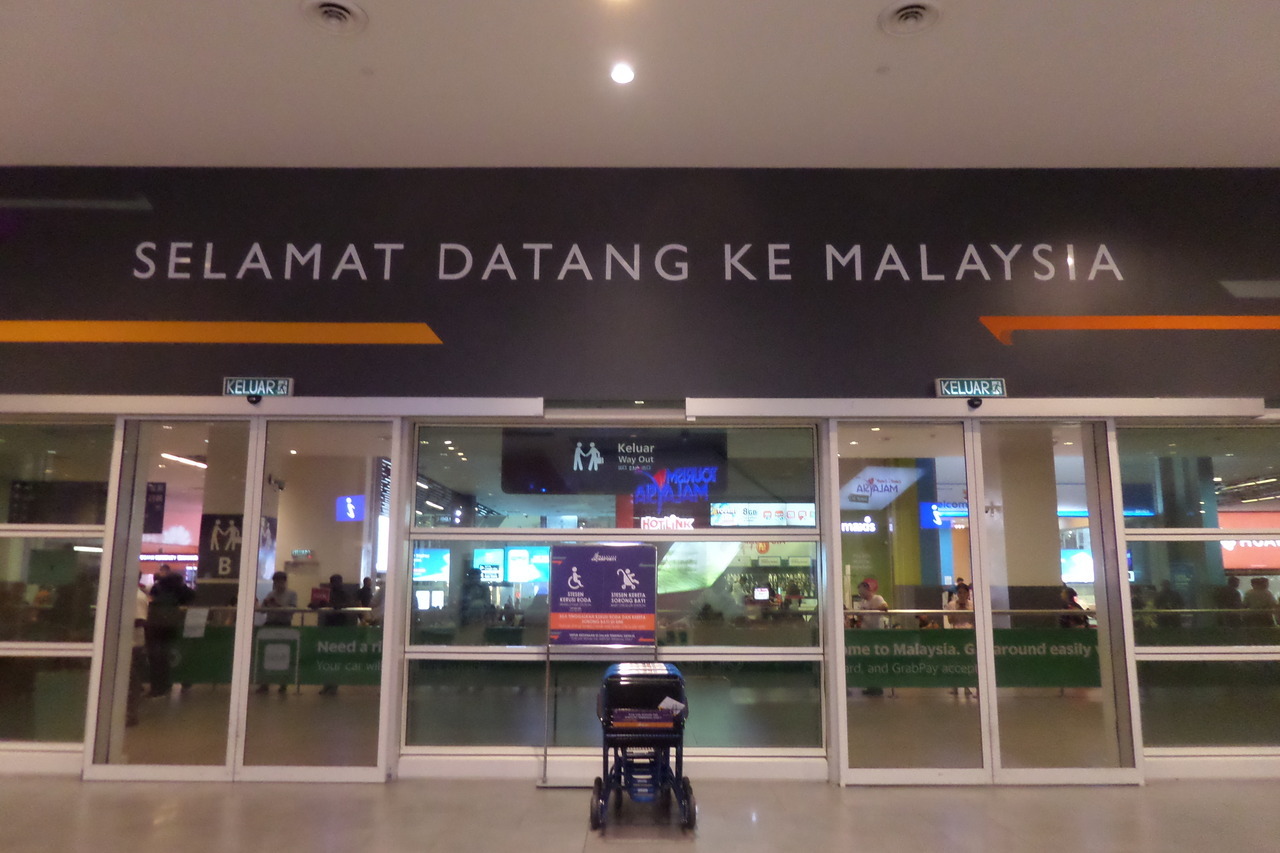This post is a detailed guide about what to do and see in Bukittinggi in Sumatra if you visit for a shorter time. If you are a digital nomad, also see my Digital Nomad City Rating for Bukittinggi.
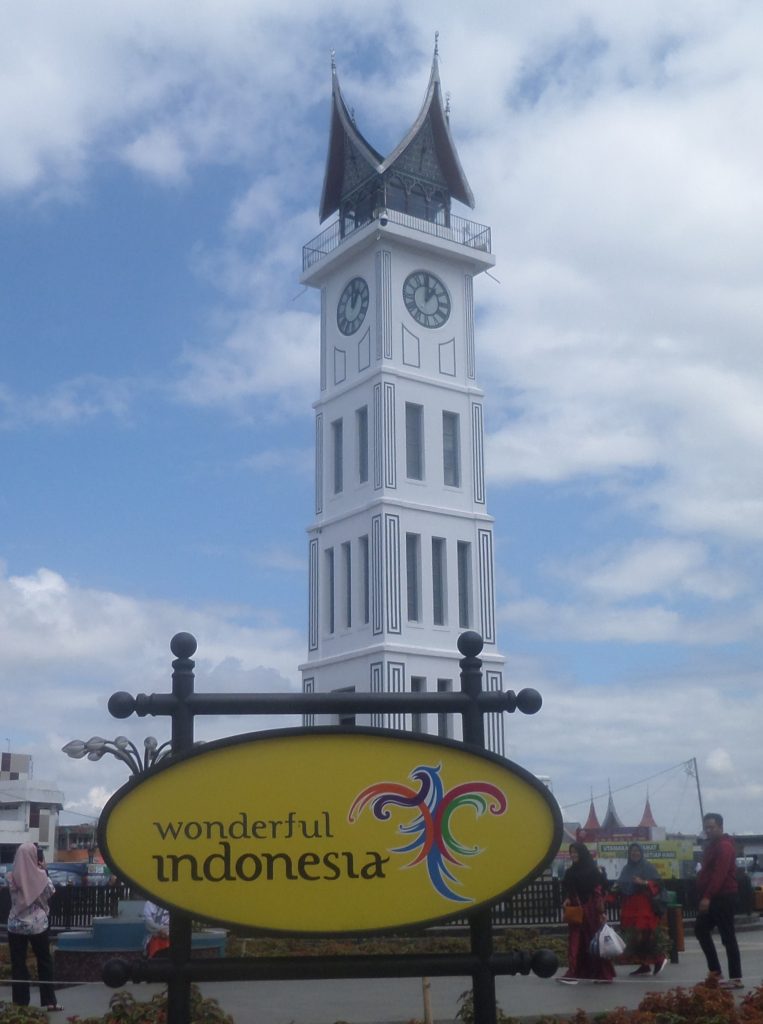
1. About Bukittinggi
Bukittinggi is a small town of about 120.000 inhabitants in Indonesia, on the island of Sumatra. It is perhaps the best choice if you want to spend a longer time in West Sumatra for several reasons.
First of all, the climate is very pleasant, even though the Equator runs just a few kilometer to the north of the city. The reason is that Bukittinggi, as the name implies (bukit is mountain in Indonesia, and tinggi means high), is built on top of a rather high mountain. So much so, that in the evenings and early mornings, I was actually cold wearing my usual attire of the shorts-T-shirt combo. During the day, temperatures may still rise near or even over 30 degrees Celsius, but most often it is twenty-something.
Another reason to stay in Bukittinggi for at least a few days is that it has a nice atmosphere if you stay in the city centre. Although there are no historical old buildings or nicely built pedestrian streets with fashionable, expensive shops, it still has a very good atmosphere and some of the streets are very inviting for a walk. There are also quite a few sights, and there are also many options around the city to keep you busy for a longer time.
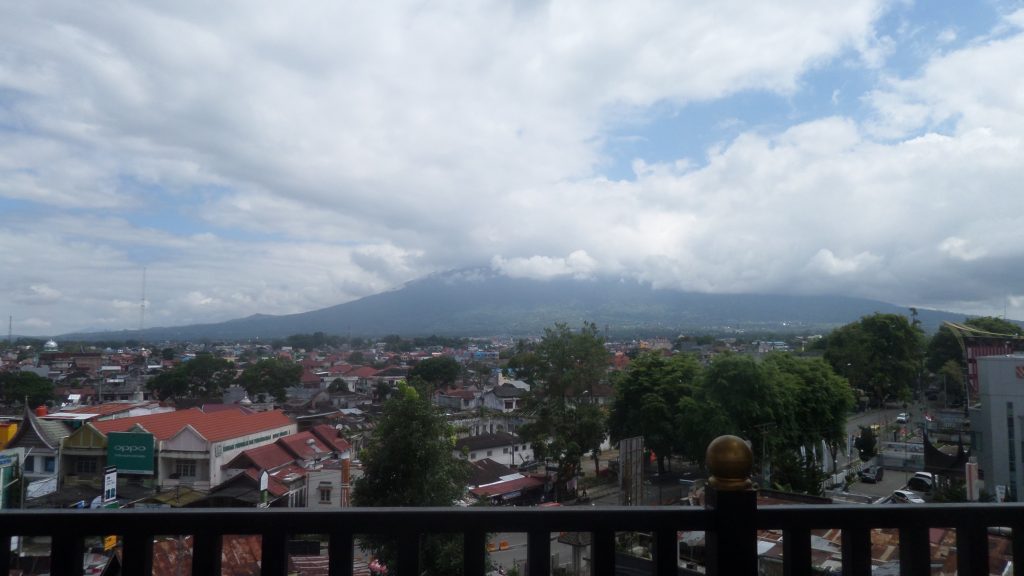
2. Sights in Bukittinggi
2.1 Fort De Kock and Zoo
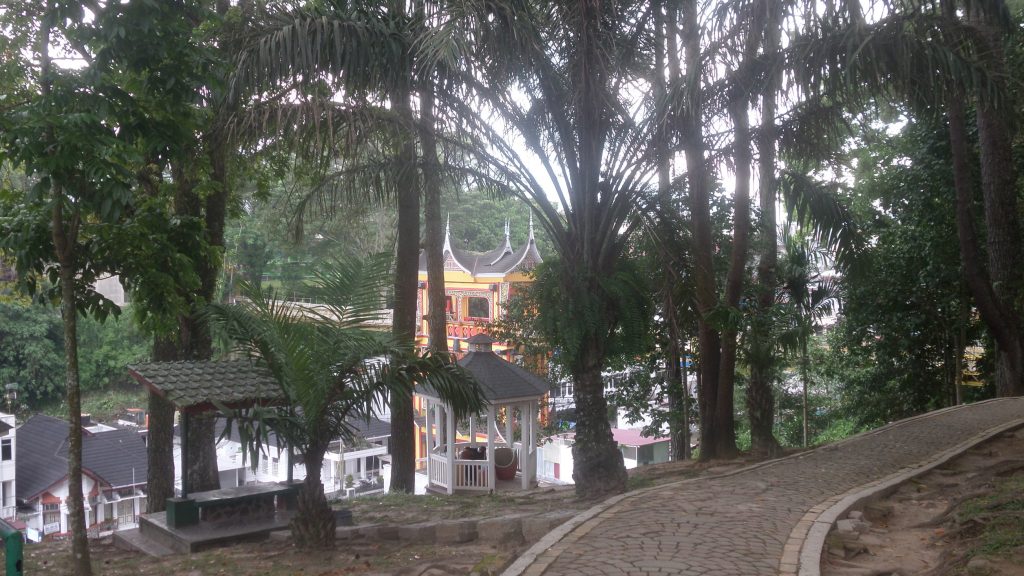
Fort De Kock used to be a fortification on top of a hill, established and built by the Dutch colonizers in the 1850s. According to various sources, it has never been a magnificent fort, but today, what is left is a few “molehills” and some canons – and I had the feeling that most of them are not even original. But visiting the fort (20.000 rupees) is still a worthwhile thing to do if you are in Bukittinggi. It has nice views, there are benches and gazebos (although many of them are unusable), and it is connected to the Zoo of Bukittinggi.
You can actually enter the complex from either the Fort, or the Zoo, and buy the ticket there. The fort and the zoo are connected with a nicely decorated bridge spanning one of the main streets, which leads to the Jam Gadang.
In the zoo, you will see endangered animals like the Sumatran tiger and the orangutan, and quite a lot of others. For me, the zoo – not just this one: any zoo – is always a sad place. I think that keeping animals in captivity only to satisfy humans’ curiosity is a shameful thing in itself, but if the animals don’t get enough space and proper treatment, it is then a crime, and should stop immediately. This feeling was especially strong when I saw one orangutan with unhealthy looking fur, and not looking happy at all. In fact, I only went to the zoo because it was connected to the fort.
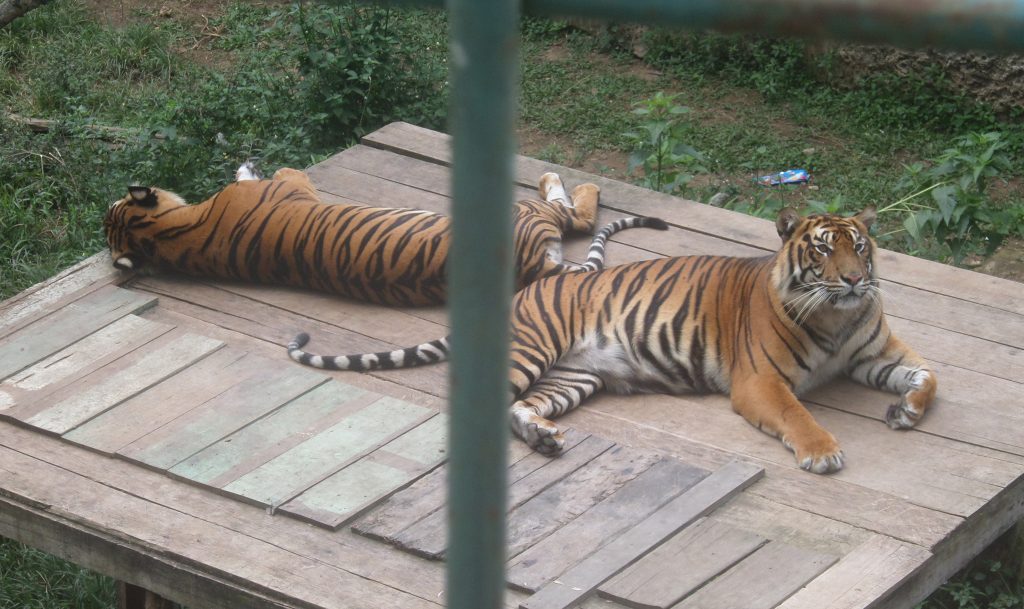
But once you are in the zoo, there is a small and uninteresting museum there, but which is much-much more interesting and beautiful from the outside: it is built in the traditional Minangkabau style, with rich decorations.
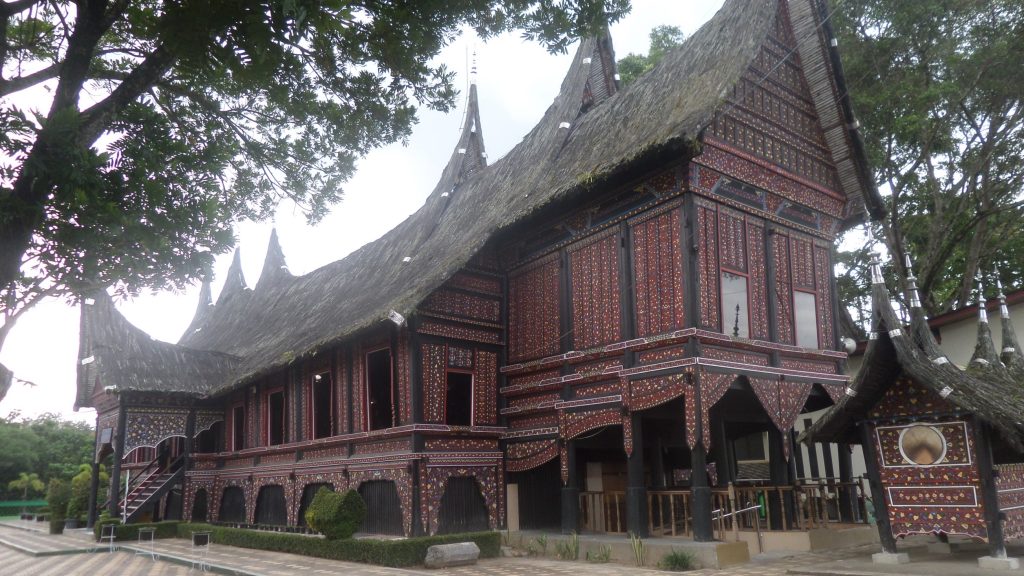
2.2 Jam Gadang – the Clock Tower of Bukittinggi
Jam Gadang is the pride of Bukittinggi, and no visit to the city is complete without walking around it and spending some time at the square. It was built by the Dutch in 1926. Originally, they placed a rooster on top of the tower, but when the Japanese colonists came, they decided that a shinto shrine would be much more appropriate. Finally, after Indonesian independence in 1949, it was replaced by a Minangkabau style roof – West Sumatra is home to the Minang or Minangkabau people.
Another interesting thing about the clock tower that, although the face of the clock uses Roman numerals, the number 4 is represented with “IIII”, rather than “IV”. This gave rise to several interpretations and legends, one of them is that the four strikes stand there in memory of the four workers who dies during the construction of the tower.
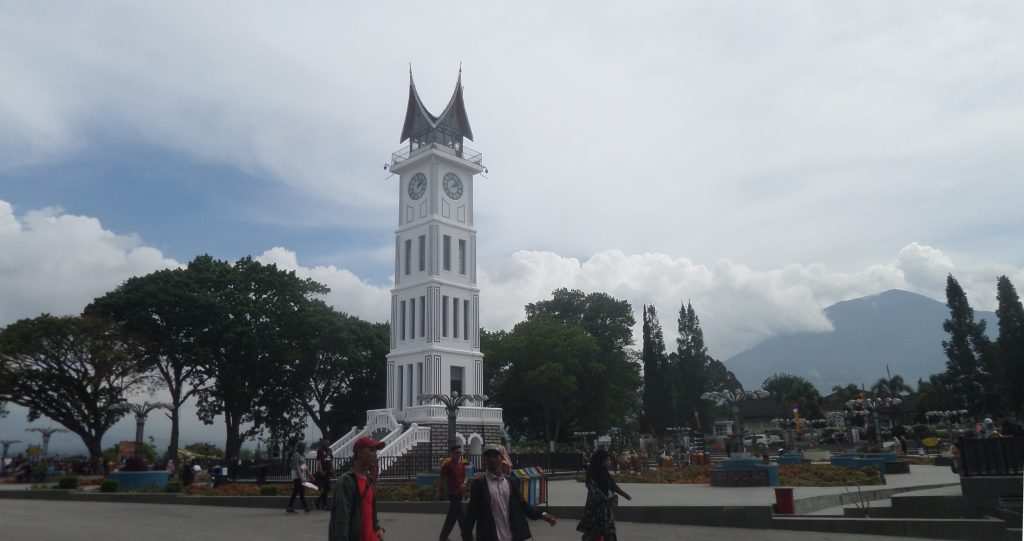
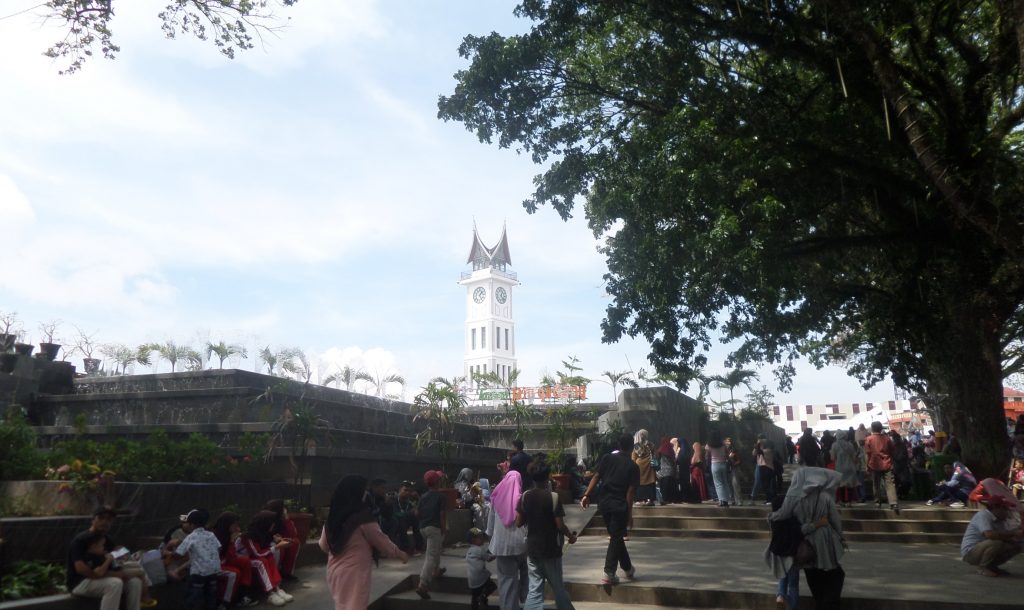
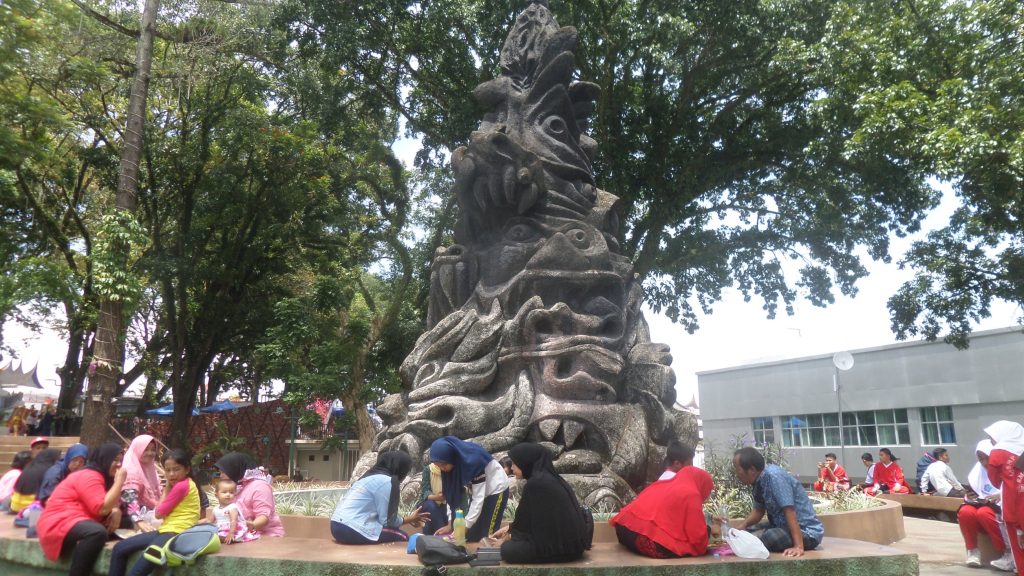
2.3 Panorama Park
Panorama Park is in the centre of the city, and it provides a breathtaking view over the valley below – Bukittinggi is built on top of a hill. The park itself is a nice place with benches among trees, from where you can enjoy the view. There are also a row of shops with souvenirs and clothes, and some, where you can buy food and drink (forget about beer or alcohol here).
Make sure you walk along the narrow path in front of the shops, that leads to you to a lookout tower, from where you can have see a lot further over the surrounding hills and the city. Below the tower, there is a cemetery (should you fall down from it… – I know, this was such a stupid joke – but the cemetery is there anyway).
You could go there any time of the day, but perhaps it is best to go for the sunset, just before 6pm. The park closes at 6, so make sure you arrive at least half an hour earlier if you want to enjoy it at all. Entrance fee is 20.000 rupees.
From the park, there is an entrance to the Japanese hole, which is a cave built by the Japanese during the war, the Japanese occupation of Indonesia. I didn’t go to see it, because everyone says it is what the name says: a hole. The other entrance to it is down the hill, near the road which leads you to Sianok Valley.
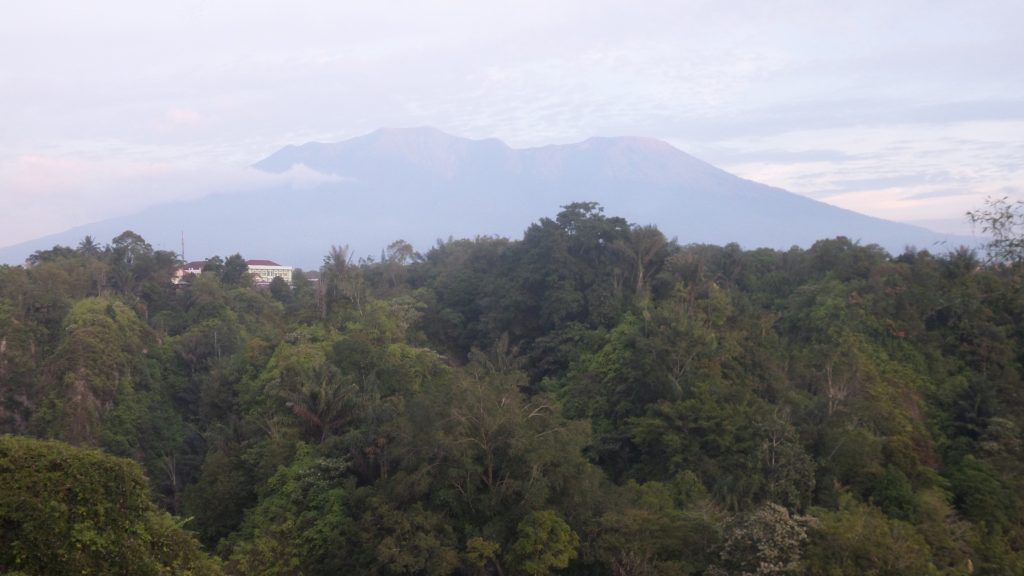
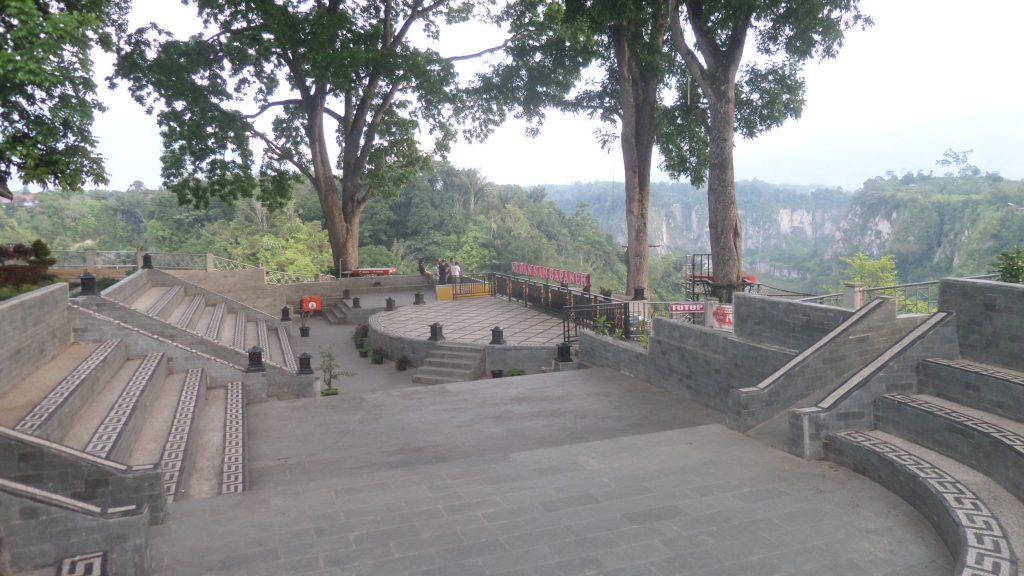
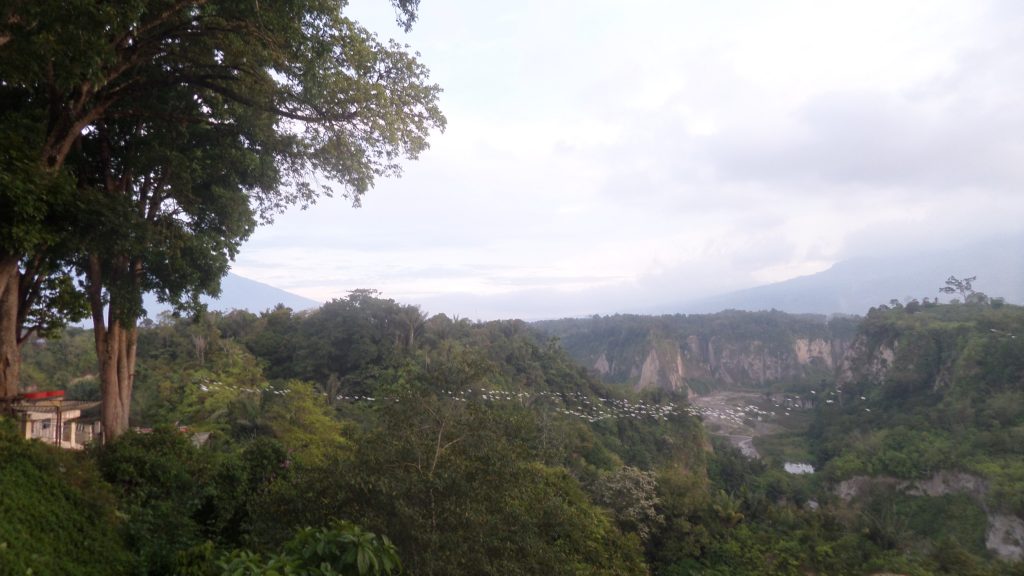
2.4 Sianok Valley
You can walk down to the valley from near the Panorama Park, on a steep slope (walking back will be much harder). In the valley, you will see a village with rice fields and beautiful hillsides. Nothing spectacular though, but if you have time, why not.
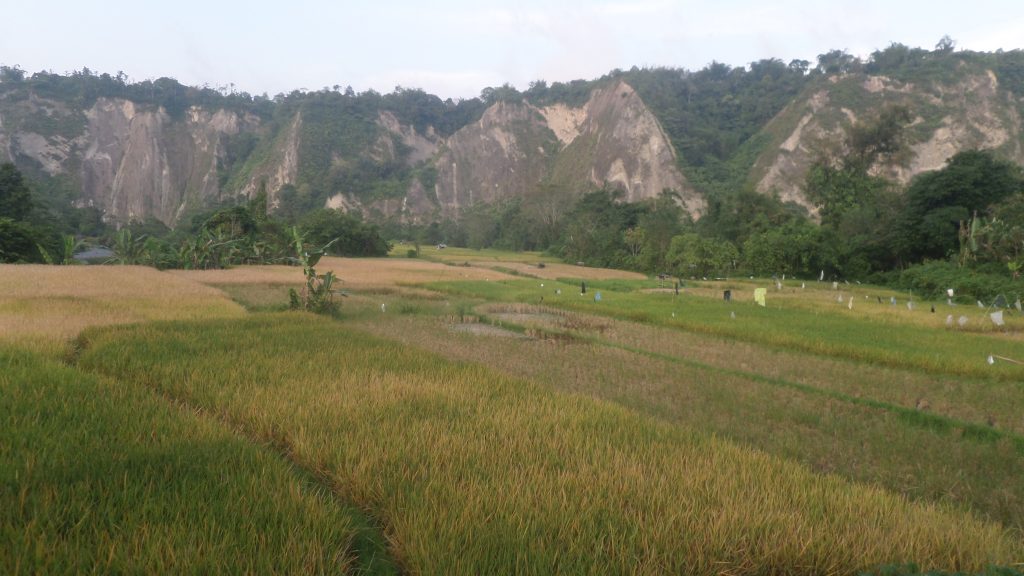
2.5 Policewoman monument
An interesting monument celebrating policewomen in Indonesia. The first policewomen appeared in Bukittinggi in 1948, when they were “short of” men, and also because they realized that women will not let men search them.
Unfortunately, the monument is always closed except for one day when there is a special ceremony celebrating the police. You can still walk around it, and catch a glimpse of the statue of a policewoman, and have a look at the engraved pictures decorating the sides of the monument.
3. Food
Food in Bukittinggi is essentially Padang food: spicy and delicious. Similarly to Padang, in some restaurants, you will get a plate of rice and a lot of tiny plates with various dishes. You eat what you like, and you only pay for what you have used (see more detailed description of this at my post about Padang).
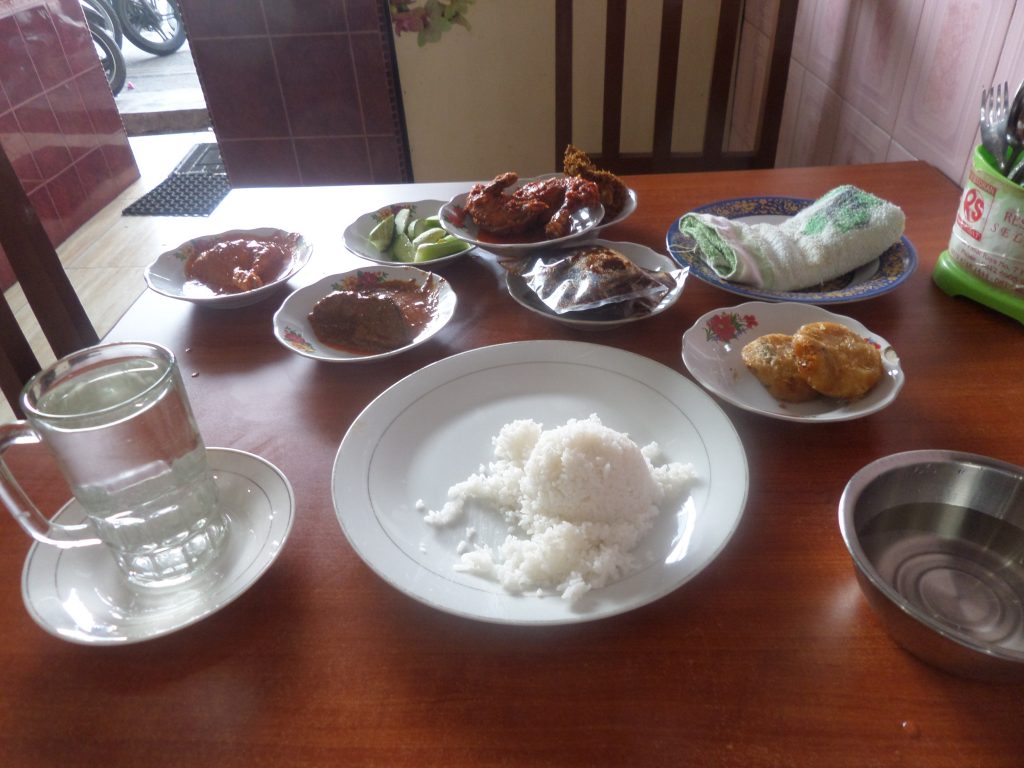
In the city centre, there are many options. You can also find quite a few restaurants (with the small plates), but you can also try the street food. Jalan Ahmad Yani, the street running from the Jam Gadang square to the north) is filled with food tents in the evening, from about 6pm. They serve simple but delicious food, and prices range from 13k to 25k rupees for a plate. Try the martabak mesir (Egypt martabak), at some places served with cheese as a topping, or the soups (soto Padang with either chicken or beef).
Right at the Jam Gadang square, there is the Art Café, a very nice place with a gorgeous view. They serve the usual stuff: fried rice, various fried noodles and soto. Their black coffee is very good, and the prices are almost similar to those of the street stalls. Very good Wifi or free.
Another favourite of mine was CK Center on Jalan Ahmad Yani (where the street stalls are in the evening), but this one is open from morning till late in the evening. They have some options which you will not find elsewhere, so it is very good if you are getting tired of the fried rice/fried noodle/chicken rice every single day. Try heir spaghetti (with various toppings), or the steamed broccoli with chicken and various other delicacies. And their mango juice is the best I have had anywhere in Asia! Their prices are very reasonable, I never paid more than 60 including everything. Free Wifi, but when there are many guests, it tends to be very slow. It is an open air terrace, but hey also have a non-smoking room inside, a rare find in the whole of Indonesia.
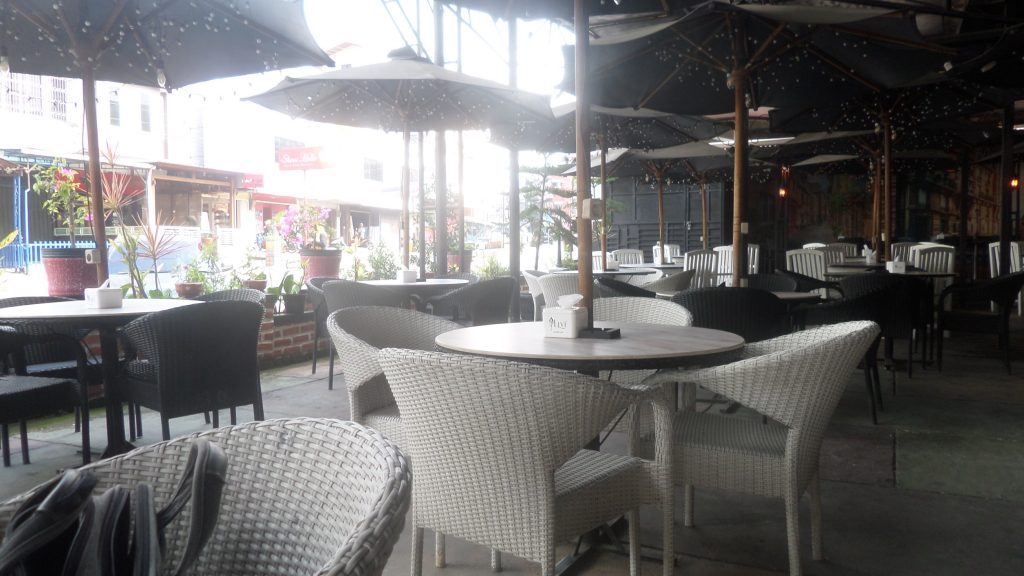
For coffee, I can also recommend Ummak Café next to Hotel Ananda – they don’t serve food though, as far as I know. There a quite a few other, good looking cafés down the street on Jalan Yani (the one with the food stalls in the evening), but I never tried them.
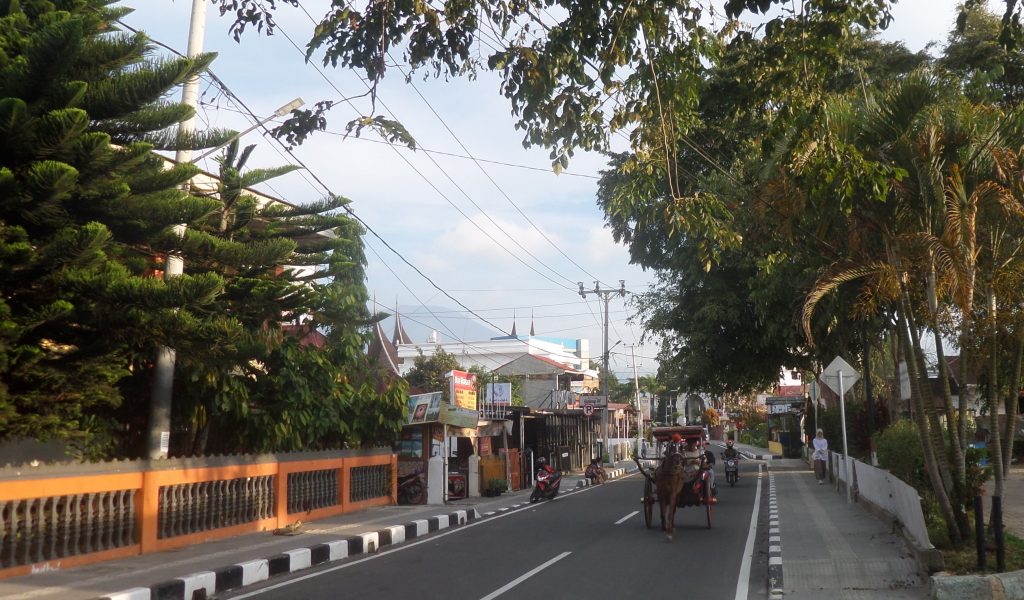
4. Accommodation
The best location to stay in Bukittinggi is in the centre: find a hotel near Jam Gadang, or not very far from there. In Chinatown, on Jalan Binuang, you will find small budget hotels next to each other. Just walk in and enquire – that’s what I did myself – and you may even get some discount if you stay a bit longer. In this area, there are also some vetter and more expensive options like the Grand Rocky Hotel or the Novotel.
I stayed at Hello Guesthouse, by far the most famous place among both locals and visitors. They have cheap dorms, simple rooms and big rooms with balconies. I stayed a longer time in the balcony room, which was excellent. I also stayed a few nights in the small room, which only had a window to the inside of the house, so it was dark, and very small – but it had a bathroom and a comfortable bed, too. The staff are also nice, and breakfast is included in the price. I paid 185k for the small room, and 250k for the balcony room (it is more expensive, but I stayed for three weeks, so I got a little discount).
The only problem – and a huge one! – is that the guesthouse is right opposite a mosque, and not far from another mosque. You already know what I mean, if you have ever been to Indonesia: the mosques have incredibly high tech loudspeakers/sound systems, so that everyone in a kilometre-radius should hear clearly when they read the prayers or parts of the Koran. And for foreign ears, it seems like they do that continuously, all day long. But wait, there is more: the first prayer is before 5am (sometimes 4.30am), and if you think that the volume is lower that time, you are mistaken! So it will wake you up whatever you do, and then you can enjoy the service with maximum volume for at least half an hour, but on certain days – not joking, not exaggerating – for a full hour! And then you can sleep some more if you want to, but then they will repeat this innumerable times during the day.
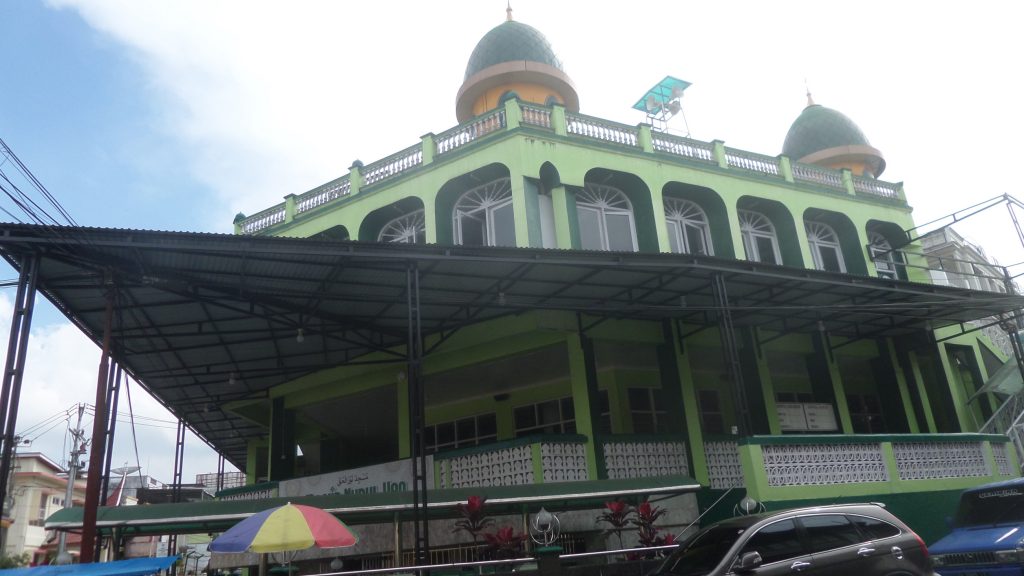
5. Shopping
Bukittinggi is a small town, so don’t expect huge malls with world famous brand names. However, you can satisfy your basic needs for shopping for clothes, shoes and simple accessories.
Just beside the main square of the clock tower (Jam Gadang), you will find two streets going north. The upper one is called Pasar Atas, which means upper market, and the one below is called Pasar Bawah or lower market in English. Pasar Atas is lined with shops and street vendors that sell mainly clothes, watches, mobile accessories and SIM cards, snacks and jewellery. Pasar Atas runs all through to the entrance of the Zoo. Somewhere in the middle, you can turn right (if coming from Jam Gadang), and you will find a maze of further shops. This is really a maze, I did get lost there, and was struggling to find my way out. From this maze, you can also walk down the hill through Janjang 40 (means 40 stairs in Indonesian), which was built by the Dutch in 1908. It contains more than 40 stairs though. It is an interesting place, but I am a little reluctant to call it a tourist sight.
There is another nice stairs down from Pasar Atas to Pasar Bawah (the opposite direction from Janjang 40), which is called Janjang Pasanggrahan, and is much more colourful than Janjang 40, with its murals on both sides. “Upstairs” on Pasar Atas, it starts right next to the Zoo entrance, and it’s a little difficult to notice if your are not specifically looking for it. You can walk down to Pasar Bawah, where the local Chinatown is, called Kampung Cina in Indonesia.
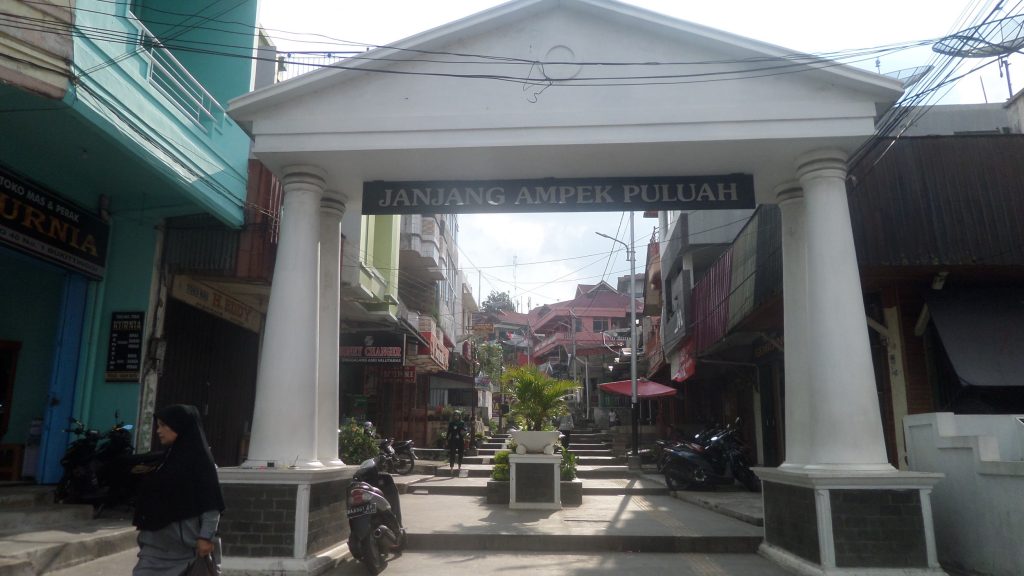
Bukittinggi Plaza is on the Jam Gadang Square, and has several shops, a small supermarket and a fast food restaurant, where you have fried chicken and even spaghetti. If you want to buy cheap and good quality clothes, head to the first floor.
There is a supermarket on the second floor of Bukittinggi Plaza, but if you need a larger supermarket, you will have to find Niagara Supermarket, not far from the Jam Gadang to the south. It isn’t huge either, but it is the largest you will find in the centre of Bukittinggi, and their prices are much better than at the ubiquitous tiny shops.
6. Where to go around Bukittinggi
There are quite a few options for day trips from Bukittinggi. For all of them, you will have to use some kind of transportation. You can either rent a motorbike from one of the guesthouses (or ask them where you can ren tone if they don’t have their own), or you can hire a driver with either a car or a bike. I am travelling solo and I don’t drive, so I hired the guide of my own guesthouse (Hello Guesthouse), who took me to Bonjol and the lake with his motorbike. It cost me 350.000 rupees for the whole day.
6.1 Lake Maninjau
Lake Maninjau is a volcanic crater lake very near Bukittinggi. It is a huge lake, about 100 km2. You can either go to Puncak Lawang hilltop, where you may have a breathtaking view over the entire lake – if you are luckier than me. When I visited, the whole lake and the surrounding mountains were covered in thick clouds, so you could only see the water surface, but even that was a special and wonderful experience to see. If you search for images, the really beautiful ones are clearly “photoshopped” (nowadays, we may also use the word “googlephotoed”, since Google periodically sends reminders that they automatically retouched some of your photos, which then turn out to be completely different from your original photo, and very far from what you actually saw when you took the photo. So I have the feeling, that most of the time, the lake is covered with clouds. When I asked some other tourists in my guesthouse what they saw when they visited the lake a few days before, they said the lake was buried in clouds then, too.
If you go to Puncak Lawang, you can hike down the very steep hill to the lakeside, or you can go directly there from Bukittinggi, and wander around in the small villages. Some people drive around the entire lake, my guide said.
(I am not going to show you the photos I took at the lake – you would be disappointed. On the other hand, my photos wouldn’t do justice to the view I had in real life there, even if there were clouds all over the place, maybe even around us, too. Go and check it out yourself.)
6.2 Villages
Another activity that you may want to do is visiting some of the villages around Bukittinggi, perhaps on the way to Lake Maninjau, or Bonjol, if you decide to go there. You will meet some very nice people, and if you speak a little bit of Indonesian, you will make them very happy. They will, however, use the very few English words and expressions that they know – or who knows, you may even find someone who speaks enough English to have a have a little chat.
In any case, the rice fields and the village life, plus the views will make the trip interesting enough even without having very meaningful conversations with the locals.
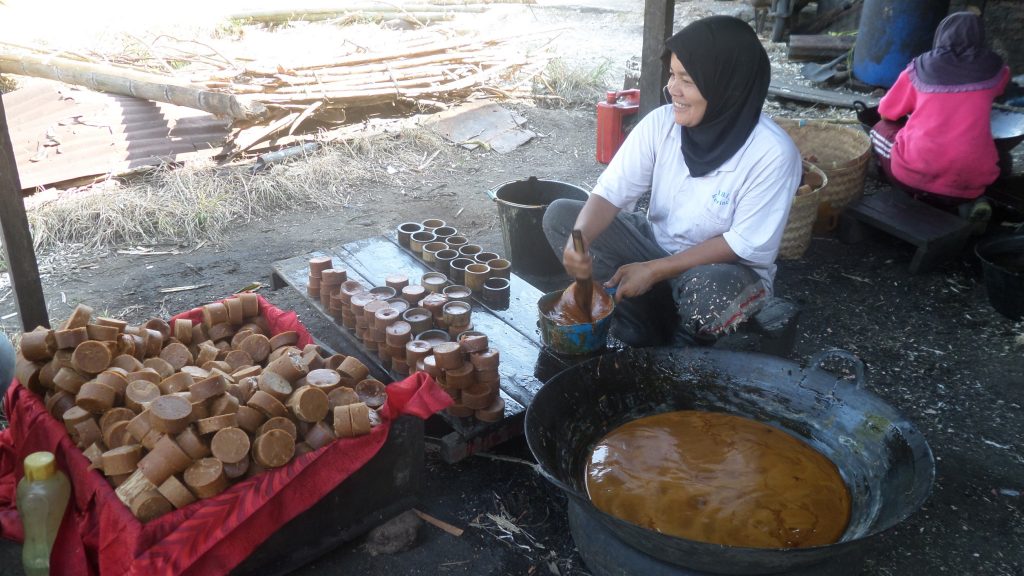
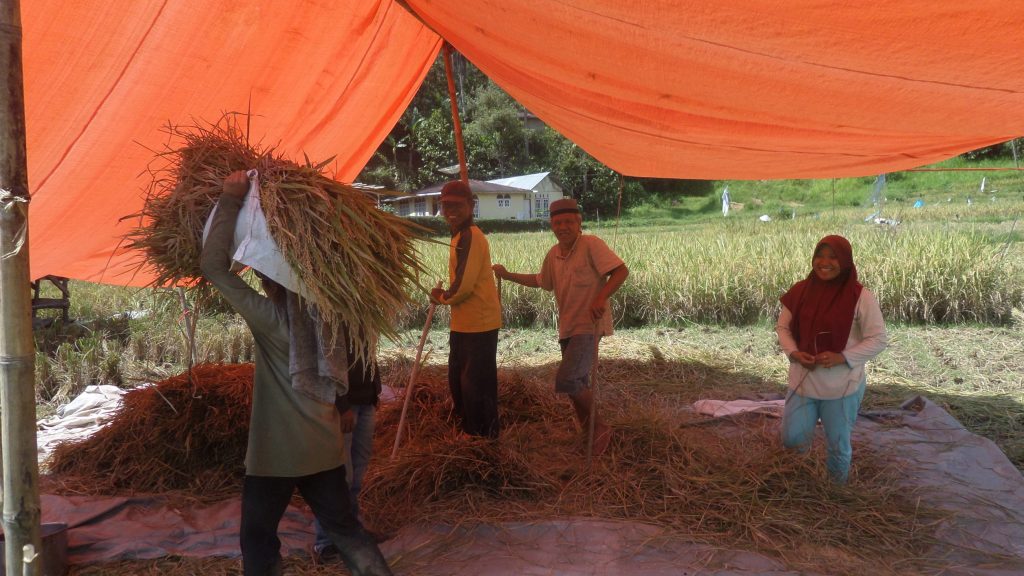
6.3 Rafflesia flower
The rafflesia is an endangered species, and grows in different parts of Southeast Asia. You can also see them near Bukittinggi, when they are blooming. When my guesthouse staff notified me that the rafflesia is in full bloom, they ordered me a Grab bike, which took me to the the small village nearby Bukittinggi, and there, my guide was already waiting for me. These guides collaborate closely with guesthouses and hotels in Bukittinggi. When the rafflesia in blooming, they send a message to the hotels, who in turn alert their guests, and the guide will be waiting for them when they arrive.
I paid for the guide 100.000 IDR, plus you have to pay for the transport cost, which was less than 40k return by motorbike. You can read about the rafflesia and my trip there in my other post here. (Another place where you can easily see rafflesia in the wild is Kuching in Malaysia.)
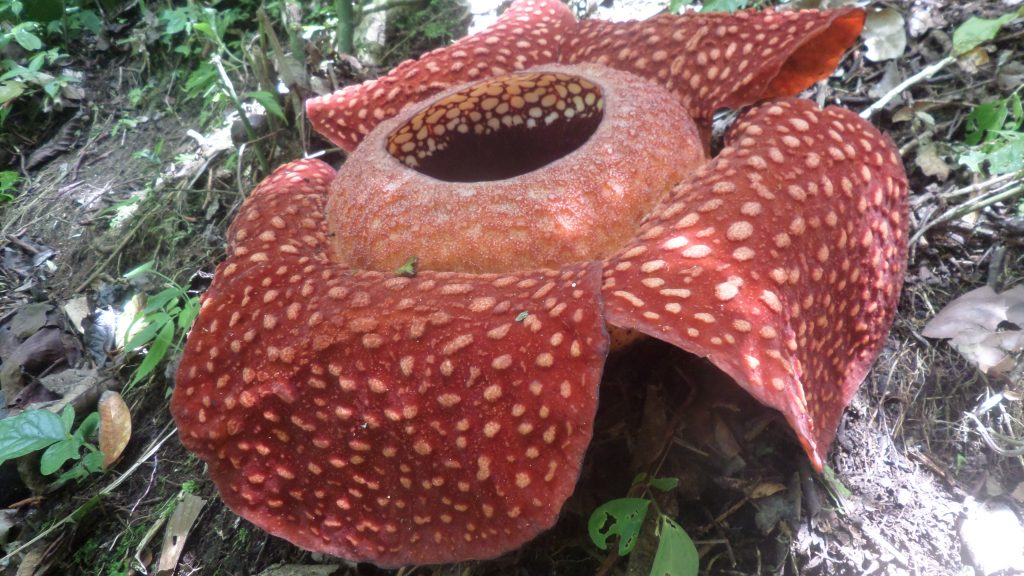
6.4 Bonjol
Bonjol is not an interesting town in itself, although it has beautiful views, because it is among high mountains. Why I wanted to go there is one single thing: the Equator, which runs through the town centre. Even if there is not much to see there (besides a small museum), the feeling itself that you are standing exactly on the Equator is something special.
To do that, you will have to either take a public minibus, or you can drive there yourself, or hire a guide. I opted for the latter. I discussed with my guide that it’s gonna be a little difficult, because there is nothing to see near Bonjol either. So what we did is drive to Bonjol first, and then back almost all the way, turning west not far from Bukittinggi, and drove to Lake Maninjau. This took us a long time, although we didn’t spend much time in Bonjol: taking a few photos and visiting the museum.
I read some Tripadvisor reviews about the Equator in Bonjol, and some people write that it is only good for people who want to show off and brag about having passed the Equator line. Oh, but that is perfectly true! 😁 Of course you want to do that. There are literally only a handful of settlements (count on one hand, not two) all over the world, where the Equator actually goes through. Don’t miss it! If it is only for some good like hunting on Instagram or Facebook, no problem.
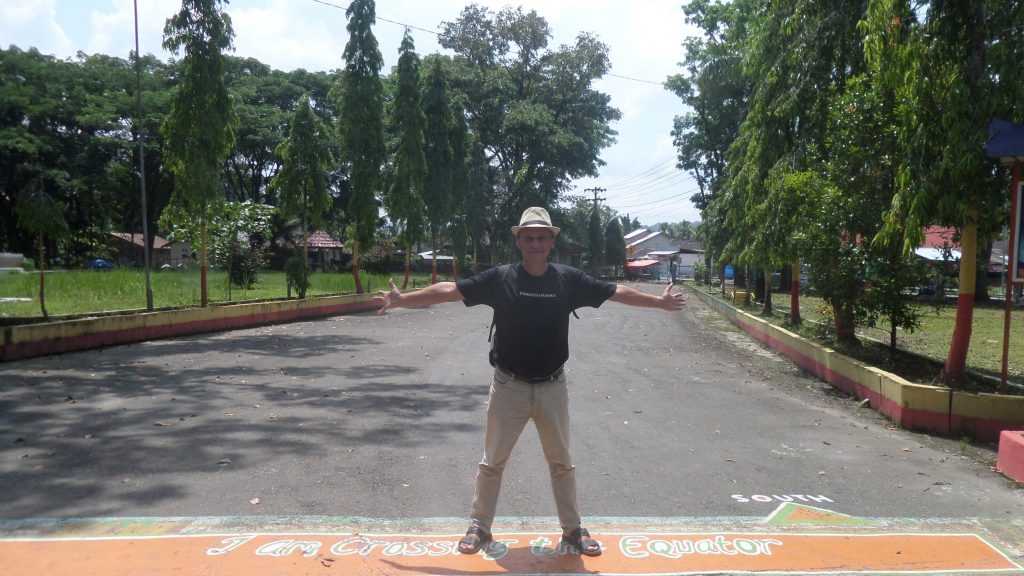
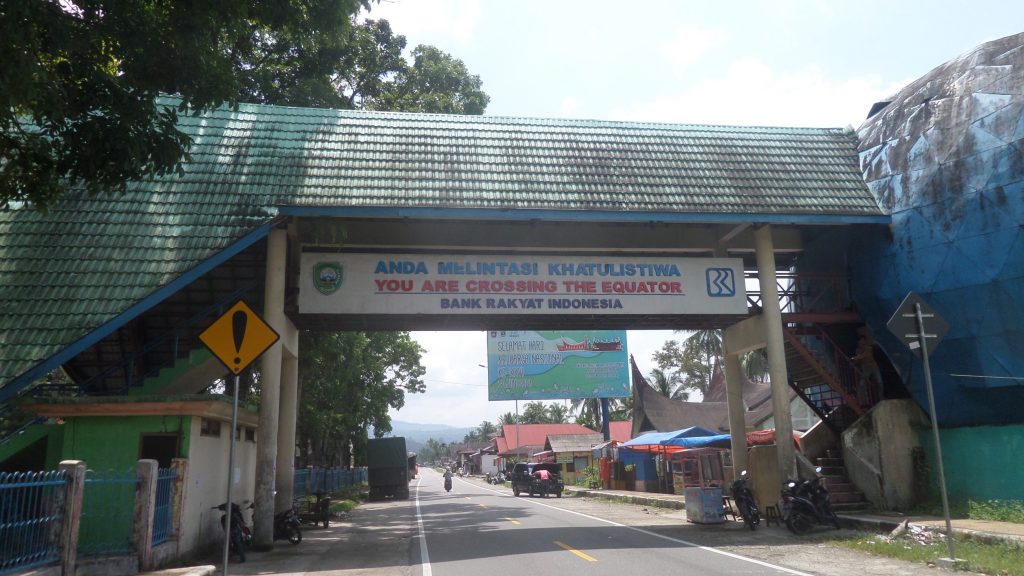
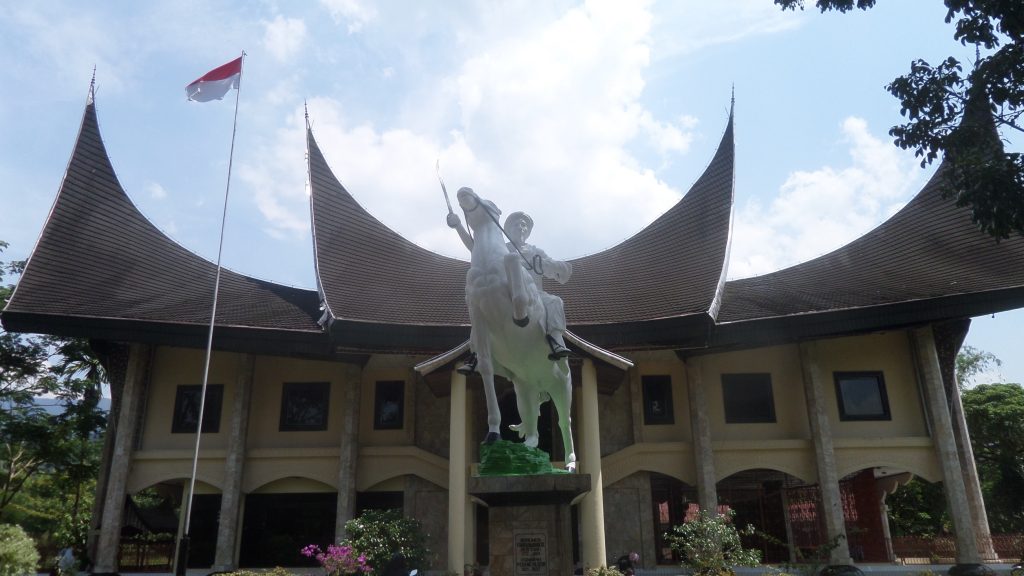
The museum is called Museum Tuanku Imam Bonjol. Bonjol was a cleric, who fought against colonial rule, and the town is named after him. The museum, on the other hand is rather boring, unless you enjoy looking at old swords, kitchenware and such. Perhaps with a guide, it would be interesting, but then not because of the museum’s collection, but because the guide could tell you about the history of West Sumatra perhaps.
Even though Bonjol itself is not a very interesting town, the way from Bukittinggi to Bonjol is one of the nicest, with jungle on both sides most of the way, and at some points, gorgeous views: you will be driving on and among very high mountains. I also stopped at some of the villages on the way, and saw people harvesting rice, drying betel nuts and doing their everyday jobs.
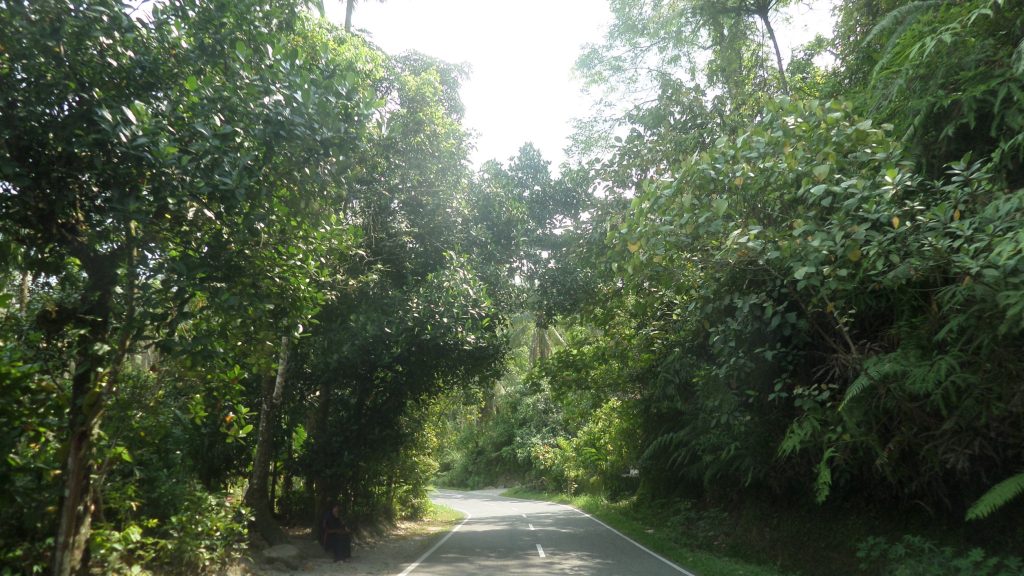
6.5 Padang
The capital city of West Sumatra, to which Bukittinggi belongs, is about a hundred kilometres away, but it takes about 3 or 4 hours to get there by public transport. Padang is a city of about a million inhabitants, and is not a particularly beautiful city, but it is on the shores of the Indian Ocean, and has a long beach (coastline is a more appropriate word, don’t expect anything like touristic beaches.
However, there are a few interesting things to see there, so if you have time, discover Padang fro yourself. I spent there one whole month, and I liked my stay there. In my other post, you can read about what to do and see in Padang, and you can also read my Digital Nomad City Rating about Padang.
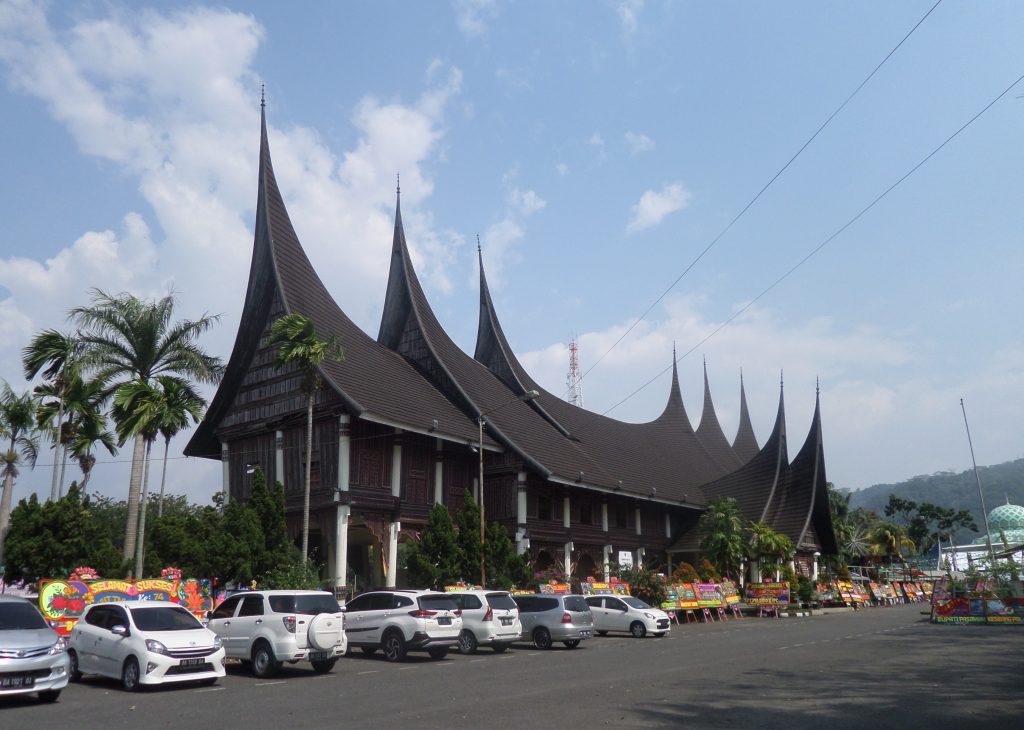
6.6 Mentawai islands
For many tourists, the Mentawai Islands is the main reason to visit West Sumatra. On the one hand, the Mentawai are regarded some of the best spots for surfing, and on the other hand, it is home to the Mentawai people, a tribe who live in traditional houses, follow traditional religious practices and they even have their own language different from Indonesian. They have their shamans, who must wear nothing but a loincloth and a necklace (and a flower in their hair), and are highly respected by the community. Mentawai tattoo is also famous. In interested, see my trip report and advice on how to visit the Mentawai tribes in Siberut (one of the Mentawai islands), and I have also written a separate post about Mentawai culture and traditions.
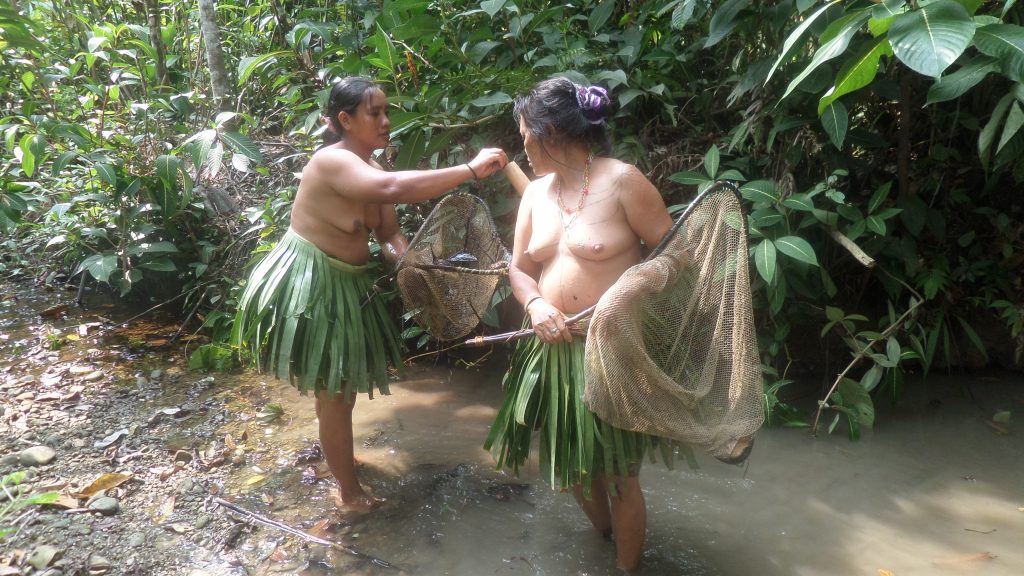
7. How to get to Bukittinggi
The nearest airport is the Padang airport called Minangkabau International Airport (Minangkabau is the name of the local people). From there, there are direct minibuses to Bukittinggi, and it will take 2 to 3 hours from the airport to Bukittinggi centre. The price varies, I only took the minibus from Bukittinggi to the airport, for which I had to pay 65.000 rupees, but it came to pick me up at my guesthouse. This is way too expensive though, from Padang city (not the airport) to Bukittinggi I only paid 20.000 for the minibus, and the when I used the AWR shuttle bus, it costs me 50.000. Taxis will be definitely in the range of 300.000 to 400.000 or perhaps more, depending on your haggling skills. But I have just checked it on my mobile, and if I want to get from the centre of Bukittinggi to the airport by Grab car, it would cost you 269.000, or 323k for a 6 seater. So if you have the Grab app, use it from the airport when you arrive.
You can read about how to get from Padang city to Bukittinggi here.

